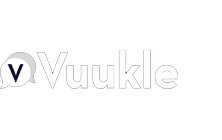Programmatic and Bad Ads
Digital advertising soared 35% to $189 billion in 2021, according to the IAB’s Internet Advertising Revenue Report. By any estimate, that’s big business. A market this size creates lucrative opportunities for criminals. By utilizing the existing programmatic advertising system, malicious actors traffic “bad ads” laden with risk to steal personal information and money from unsuspecting users, in the same way that global agencies and brands traffic safe ads to present to those same users.
Supply side platforms (SSPs) are on the receiving end of a flood of ads that are trafficked through the automated ad bidding process every day, so they can't possibly examine every ad manually before they are displayed on the SSP’s platforms. As a result, the issue of bad ads affecting SSPs negatively is a problem that's been building for years. But, that doesn't mean that SSPs can't do something about it.
What Types of Bad Ads Adversely Affect SSPs?
Bad ads threaten everyone in the advertising ecosystem by degrading ad quality. Specifically, ads with security violations and socially engineered scam ads have the largest negative effects on SSPs and on end users. Ads with security violations take control of the user experience, while scam ads are designed to fool viewers into voluntarily giving up personal information.
Malicious ads have already begun to infiltrate web3 venues targeting users with “crypto phishing” as outlined in Eliya Stein’s recent research discoveries A Whirlwind Tour Of Crypto Phishing and How One “Crypto Drainer” Template Facilitates Tens Of Millions Of Dollars In Theft.
“Bad ads have plagued SSPs since the introduction of real time bidding (RTB),” commented John Murphy, Chief Strategy Officer at Confiant, a leading digital advertising security and threat intelligence solution provider. “Programmatic is a really efficient process, however in practice it has stripped away a lot of controls over ad placement,” continued Murphy.
What costs SSPs The Most short–and-long-term?
-
Damage to Brand Reputation
Maintaining a good brand reputation among premium publishers is a primary concern for most SSPs. On the positive side, SSPs with stellar reputations for high quality ads can win access to premium publications (pubs). Conversely, those with a poor reputation only tend to attract lower quality pubs.
This affects the new business potential of SSPs. It’s a vicious cycle which often leads those SSPs with lower reputations to take on even more low quality pubs, in order to bolster revenue, but unfortunately at the expense of their already declining reputation. The downturn cycle is relentless, unless the SSP can stop the bad ads from running on their platforms to break the cycle. -
Ad Quality Excellence Enables Access to Highly Rated Publishers
Once an SSP gains access to high-quality inventory, they need to maintain it by removing bad ads from their site, and keeping ad quality high. SSPs have shared with us that maintaining access to good quality, highly rated sites can be challenging, and bad ads undermine those efforts.
When inundated with user complaints about bad ads, publishers often take desperate measures, including shutting off entire SSPs with too many bad ads. This can have a catastrophic effect on the SSPs at fault, as their revenue is directly tied to their ability to generate revenues from publishers. Fewer publishers equals lower revenue.
-
Eliminating Resource Drains
Bad ads cause a significant drain on resources as administrative and technical SSP staff are utilized to investigate and respond to complaints from publishers. It’s costly from a manpower perspective, absorbing technical staff time and drawing key resources away from their primary roles to troubleshoot and track down the bad ads.
-
Avoiding Adoption of Ad Blockers
When users are burned by bad ads, they are more likely to seek out ad blockers to protect themselves from future attacks. Adoption of ad blockers by users eliminates huge portions of digital ad inventory, access to users and reduces monetization opportunities. It’s no small problem for SSPs.
In fact, in the recent Hootsuite report “Ad Blocker Usage and Demographic Statistics in 2022”, 42.7% of internet users worldwide (16-64 years old), more than 27% of US internet users (confirmed by Statista and eMarketer), and 35.2% of UK internet users use ad blockers at least once a month. When large portions of the viewing audience are unaddressable or unreachable, it has an obvious negative economic impact on SSP ad revenues. -
Dissuading Regulatory Oversight
Ad security and privacy violations are an open invitation for government regulation and intervention. That includes existing privacy regulations that have already changed how SSPs are allowed to operate their business. The privacy laws add overhead, complexity, costs, and the risk of significant financial penalties.
Regulations make it more difficult for SSPs to operate, more expensive, and could even reduce the total size of the market. Aside from the EU’s GDPR, several other countries have added privacy regulations. In the US, California, Colorado, Connecticut, Virginia, and Utah all have passed privacy regulations that affect SSPs or soon will. Massachusetts, Michigan, New Jersey, North Carolina, Ohio, and Pennsylvania are actively working on similar regulations.
The US Federal government is also working on country-wide privacy regulations that would have a direct impact on how SSPs are allowed to operate. The UK government is exploring interventions to address complaints from the public about scammy ads and other harms caused by online advertising.
“However, this story has a good ending, at least for our SSP clients. Through judicious use of Confiant's ad verification solution, many of our SSP clients have built and maintained premium reputations and coveted positions in the marketplace,” continued Murphy.
“We utilized our deep knowledge of SSP ad operations and our experience monitoring more than 200 billion ad impressions per quarter to engineer our security and quality solution specifically designed for SSPs. Our SSP clients have proven that — armed with the creative intelligence we provide — it's possible to maintain high ad quality and minimize costly errors that have real consequences on their business” concluded Murphy.
Learn more about improving ad quality at: https://www.confiant.com/solutions





